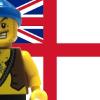Sign in to follow this
Followers
0

[Tutorial] The Captain of the Capstan
By
Foremast Jack, in LEGO Pirates
-
Recently Browsing 0 members
No registered users viewing this page.
